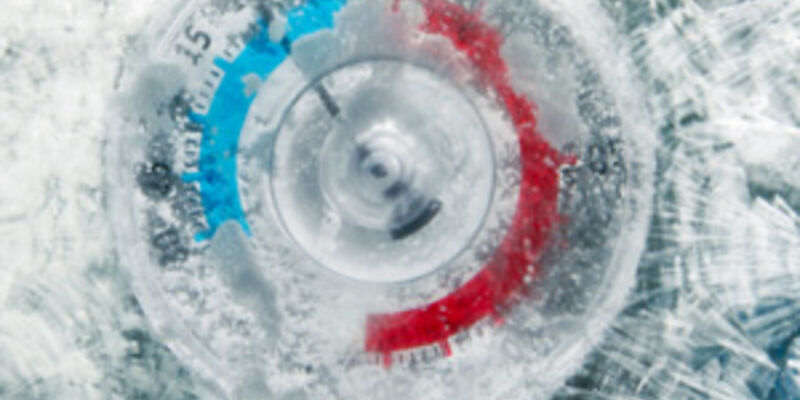
- Research
- 24/01/2013
Can it get colder than absolute zero?
The Netherlands are currently obsessed with the cold. Having experienced quite a number of subsequent icy days – where the temperature doesn’t make it above 0 centigrade day or night – people are already saying this is the longest cold spell of the past fifty years. Still, this is nothing. The past weeks, physicists have been pretty fanatical about absolute zero: -237 degrees centigrade: 0 Kelvin. A group of German scientists managed to prove it’s possible to realize a temperature below absolute zero. How did they manage, and what does their find mean for physics and our daily lives?
“It’s an interesting study, but it’s not entirely new. There have been several instances where researchers have seen temperatures below absolute zero, but this group has shown a negative temperature that’s thermostable, and that’s new and important for us in order to learn more about temperature”, says Paul van de Schoot, assistant professor at the Theory of Polymers and Soft Matter group of the Department of Applied Physics (as well as part-time professor of Theoretical Physics at Utrecht University). He reacts from the Physics@FOM Meeting, where close to two thousand physicists get together to discuss the latest news in physics. Absolute zero will definitely be discussed as well, if only during drinks afterwards.
“Classical physics has taught us that the lower the temperature, the slower the movement of atoms in a gas. At a certain point it’s so cold, the atoms stop moving altogether, and that happens at 0 Kelvin: absolute zero. In reality, the particles do still move, but classical physics doesn’t apply to temperatures that low. It’s the laws of quantum mechanics that takes over at that point. Researchers manipulated a gas so the atoms went into a high energetic state -meaning they kept moving- so they could go past absolute zero. It gets pretty complicated after that: you’d have to go beyond infinite Kelvin, then to negative infinite Kelvin, and eventually you’d get to the finite negative temperatures. It’s because in the definition of temperature, energy and entropy (chaos) are interconnected. The odd thing about those negative temperatures, then, is that they’re not colder, but actually warmer than 0 K.”
Discussion